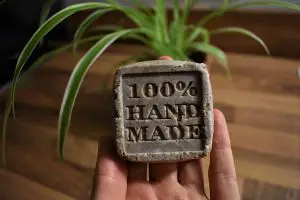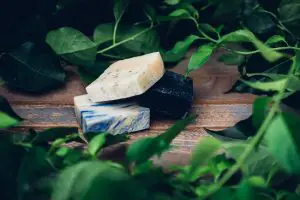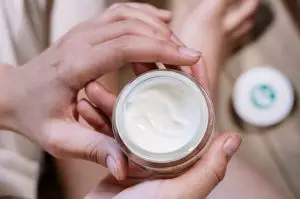Dry hair is probably one of the most common types of hair. Brittle, rough, dull color, split ends, impossible to style… They have their share of problems! And unfortunately, industrial shampoos don't help. Filled with stifling, stripping and drying products such as sulfate and silicone, they participate in the progressive drying of your dry hair. So, to reverse the trend and take care of your hair naturally without the slightest lure, what could be better than make your own shampoo for dry hair!
First, find out how and why make your own shampoo. Then find out our various homemade shampoo recipes for dry hair.
In this section:
How to make a homemade shampoo for dry hair?
Why make your own shampoo?
Doing your homemade shampoo for dry hair comes down to controlling what you apply to your body on a daily basis. Indeed, the vast majority of shampoos in supermarkets, (and sometimes even organic shampoos), are stuffed with toxic products, presenting risks for our body, our hair but also the environment.
Especially since industrial shampoos for dry hair are mostly filled with sulphate which strikes and dries the hair and silicone. The latter winds the hair fiber in order to smooth and give the hair a shiny appearance. Result: we have the impression that they are less dry while the silicone suffocates and dries our hair even more. In the end, without realizing it, it becomes a real abuse.
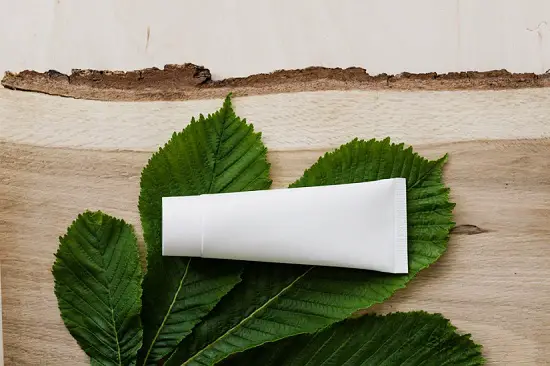
Doing your own homemade shampoo for dry hair is like using ingredients from natural origins. Indeed, all the needs of dry hair are found in the natural components. Thus, our recipes below are based on the action of different plants working together optimally to hydrate and prevent water loss dry hair.
What are the essential ingredients to take care of dry hair?
First of all, you will have to determine according to your preferences and your usage habits if you want make a solid shampoo ou a liquid shampoo for your dry hair.
- In both cases, know that two main principles must govern the manufacture of a homemade shampoo for dry hair:
- Dry hair needshydration. It will therefore require ingredients with moisturizing active ingredients or which limit water loss.
- It will take everything avoid drying ingredients such as sulphates.
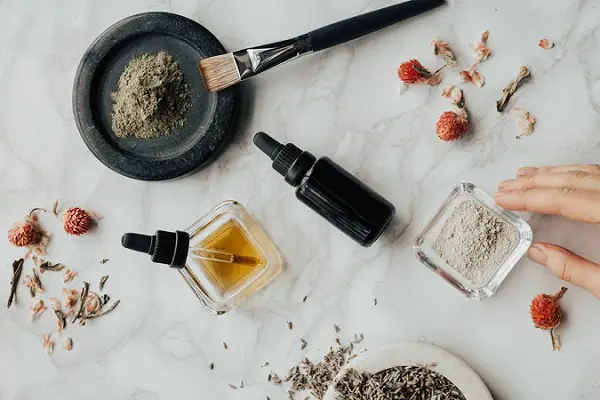
The ingredients that should be in your homemade shampoo for dry hair are :
- A gentle washing base. For solid shampoos it will be Sodium Cocoyl Isethionate or Sodium Coco Sulfate. For liquid shampoos you can find washing bases made from vegetable oils.
- Hydrating vegetable oils: Argan, Avocado, Coconut, Olive, Jojoba, Castor, Grape seeds, Broccoli.
- Essential oils: Sweet orange, Lavender, Sandalwood, Rosemary with cineole, Ylang Ylang.
- Hydrosol for dry hair : Lavender, witch hazel, or rosemary.
- Additional ingredients for hair hydration : rice protein, phytokeratin, vegetable glycerin. Aloe Vera, Cetiol
- Non-drying powders : Stinging Nettle, Neutral Henna, Orange, Clay, Shikakai and Rhassoul.
Homemade shampoo recipes for dry hair
Liquid shampoo recipe for dry or curly hair with phytokeratin
If you want make liquid shampoo for dry hair yourself, know that the recipe that we offer here contains a set of ingredients to nourish, hydrate and prevent dryness over their entire length; so as to make your hair stronger, more shiny, more flexible and to prevent it from becoming brittle.
 This recipe is taken from the site MyCosmetik. You can find the entire recipe (raw materials, preparation, and production tips) on this page.
This recipe is taken from the site MyCosmetik. You can find the entire recipe (raw materials, preparation, and production tips) on this page.
![]() Suitable for dry, brittle, and curly hair.
Suitable for dry, brittle, and curly hair. ![]() Conservation: 3 months.
Conservation: 3 months.![]() Frequent use.
Frequent use.
 Ingredients for 250 ml of homemade shampoo for dry and brittle hair:
Ingredients for 250 ml of homemade shampoo for dry and brittle hair:
- 25 ml of lavender hydrosol
- 65 ml of sterilized water
- 10 ml olive vegetable oil
- 40 drops of ylang ylang essential oil
- 45 drops of isocide
- 3 ml of rice protein
- 50 ml vegetable foam base
- 90 ml consistent washing base
- 2.5 ml of cetiol
- 8 ml of Phytokeratin
 Preparation of homemade liquid shampoo for dry hair:
Preparation of homemade liquid shampoo for dry hair:
- Put the consistent washing base in a water bath container to melt it, while stirring lightly.
- When everything has melted and the preparation is homogeneous and transparent, remove from the water bath. Then add the still lukewarm sterilized water. Gently mix again to homogenize everything.
- Pour the vegetable foam base into the preparation. Mix again and wait 5-10 minutes for the mixture to cool.
- Finally, add lavender hydrosol, cetiol, rice protein, phytokeratin, and isocide. Mix everything so that everything is homogeneous, then add the drops of essential oil last. Mix again so that the preparation is homogeneous.
- Finish by transferring the preparation to a 250 ml bottle.
source: Mycosmetik
Homemade solid shampoo recipe for dry hair
The two main advantages of solid shampoo are, firstly, that it is not wrapped in plastic, so it is one of the least polluting types of shampoo on the market. And secondly, it does not contain water, soit can be kept longer than liquid shampoos because there will be no bacterial growth.
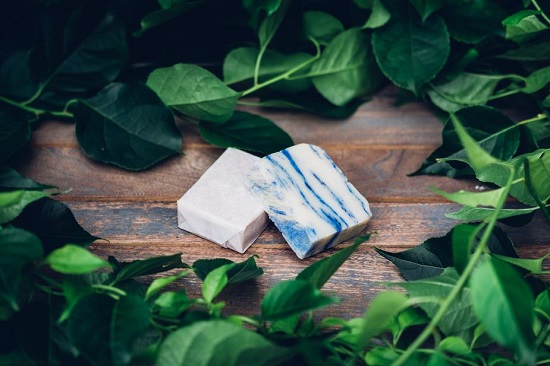
The homemade shampoo recipe for dry hair that we offer you below contains only healthy and very soft ingredients for the scalp. It is formulated from one of the mildest surfactants on the market: SCI. Indeed, the latter does not contain sulphate and it is biodegradable. The other ingredients allowmoisturize, nourish, repair and shine your hair.
![]() Suitable for dry and curly hair.
Suitable for dry and curly hair. ![]() Conservation: 6 months.
Conservation: 6 months. ![]() Frequent use.
Frequent use.
 Ingredients for homemade solid shampoo for dry hair:
Ingredients for homemade solid shampoo for dry hair:
- 40 g SCI surfactant
- 10 g of green clay powder
- 10 g of stinging nettle powder
- 15g coconut oil
- 5 g avocado oil
- 5 g of phytokeratin
- 15 g of sterilized water or Lavender hydrosol
- 10 drops of Ylang Ylang essential oil (optional)
 Preparation for homemade solid shampoo:
Preparation for homemade solid shampoo:
- Put the solid surfactants, water base, powders, vegetable oil (s) or vegetable butter in a bowl going in a double boiler. If you have opted for the addition of co-emulsifier or cosmetic active ingredients, put them with.
- Melt the whole over low heat and stir throughout the preparation with a wooden spatula until a sticky and homogeneous paste is obtained (about 20 minutes in a double boiler). You can use a pestle to crush ingredients that have a hard time melting or dissolving like surfactants for example.
- Once the mixture has melted and the dough is obtained, remove the preparation from the double boiler, and add the essential oils if you have decided to put some, mixing with the spatula or pestle.
- Once the preparation has cooled slightly, knead your dough to distribute the essential oils well.
- Before the dough cools, pour the dough into your mold (s) and press down well.
- Leave your preparation in the molds for at least 2 hours up to one day at room temperature. We recommend that you do not place them in the refrigerator to prevent them from weakening or crumbling.
- Unmould your solid shampoo when it has become very hard and let it air dry (room temperature) for at least 3 days and up to a week to prevent it from melting too quickly.
Homemade liquid shampoo recipe for dry hair with Castile soap
This liquid shampoo recipe is more suitable for hair that is curly, very dry and thick in nature. Composed of few ingredients, they are very concentrated to allowdeeply hydrate your lengths but also your dehydrated scalp. If you have quickly greasy hair, this recipe is not recommended.
![]() Suitable for very dry hair.
Suitable for very dry hair. ![]() Conservation: 2 months.
Conservation: 2 months.![]() Frequent use.
Frequent use.
 Ingredients for about 1l of homemade liquid shampoo for dry hair:
Ingredients for about 1l of homemade liquid shampoo for dry hair:
- 25 cl of castile soap
- 25 cl of Aloe Vera
- 30 cl of lavender hydrosol
- 20 cl of coconut oil
- 1 teaspoon of vegetable glycerin
 Preparation of homemade liquid shampoo for dry hair:
Preparation of homemade liquid shampoo for dry hair:
- If your coconut oil is solid, melt it first in a saucepan over very low heat. Let cool.
- Then pour all the ingredients into a closed bottle or jar that will serve as your container.
- Close the bottle and mix everything while shaking gently until you get a relatively thick and homogeneous liquid.


